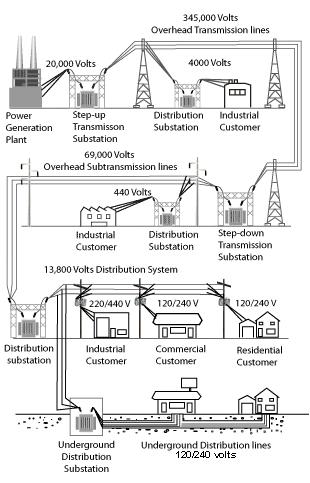Overview
Electric power transmission:
Bulk transfer of electrical energy, a process in the delivery of electricity to consumers.
Power plants are typically connected to multiple substations near a populated area through the power transmission network.
###Electricity distribution: The wiring from the substations to the consumers. Historically this business model separates the wholesale electricity transmission business from distributors who deliver the electricity to the consumers (homes). Distant energy sources (such as hydroelectric, coal and nuclear power plants etc) are connected to the consumers in towns and cities through electric power transmission.
Mostly three phase alternating current (AC) is used by transmission lines, however single phase current can be used by the railway in the railway electrification system. For long distance transmission high voltage direct current systems are used. This is also the same for undersea cables, or connecting two different AC networks
To reduce energy loss in transmission electricity is transmitted at high voltages (110kV and above). Because of the lower installation cost and easier maintenance overhead transmission lines are preferred for long transmission lines. Underground power transmission would rather be found in densely populated areas.
A power transmission network is referred to as a “grid”. In order that power can be routed multiple redundant lines between points on the network are provided. Power can so be routed between any power plant to any load centre, through a variety of routes, based on the economics of the transmission path and cost of power. Transmission companies do a lot of analysis to determine the maximum reliable capacity of each line.


